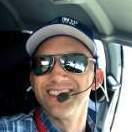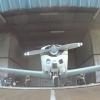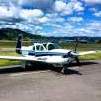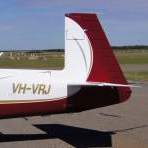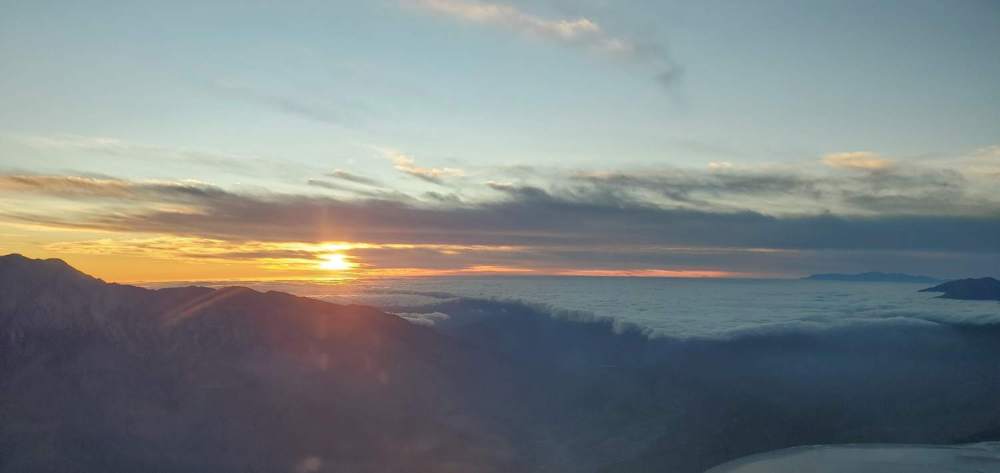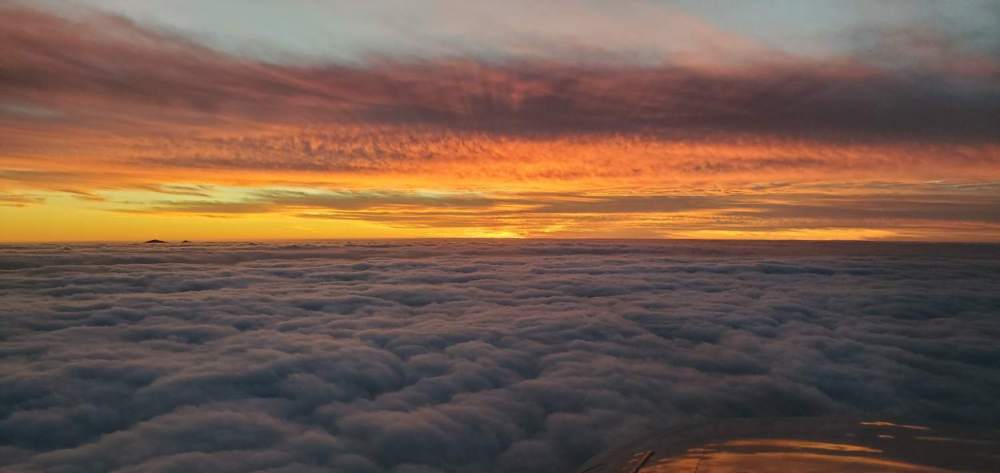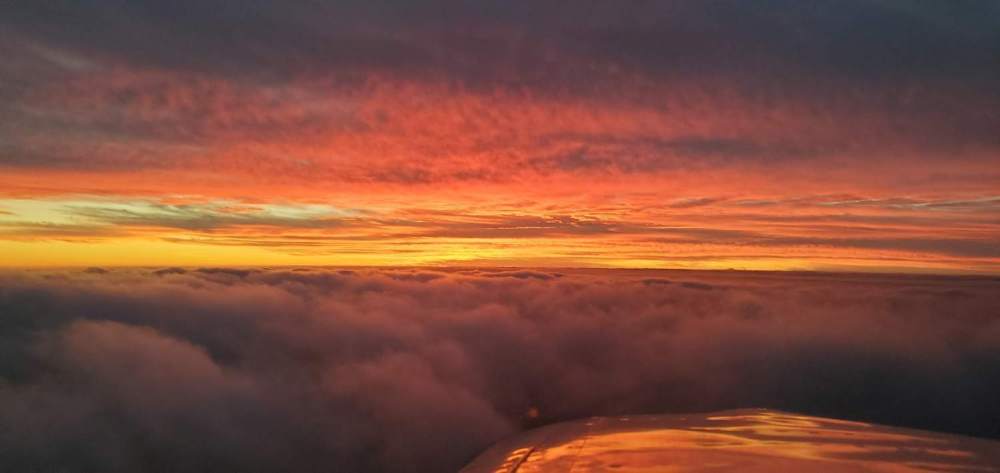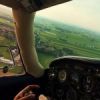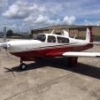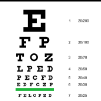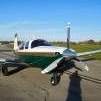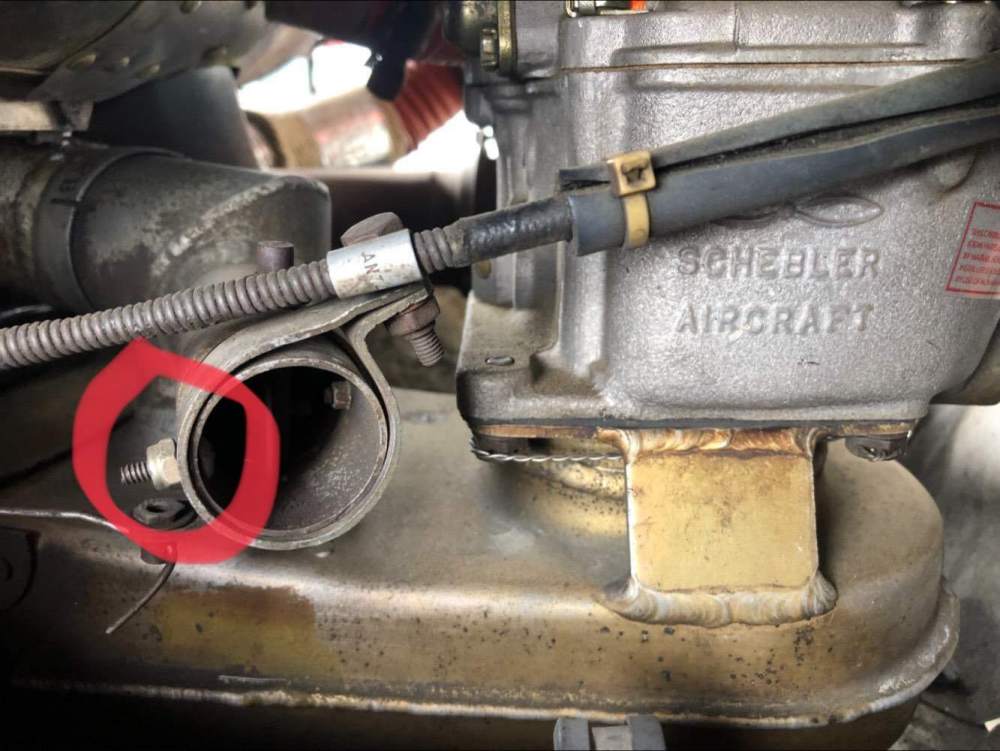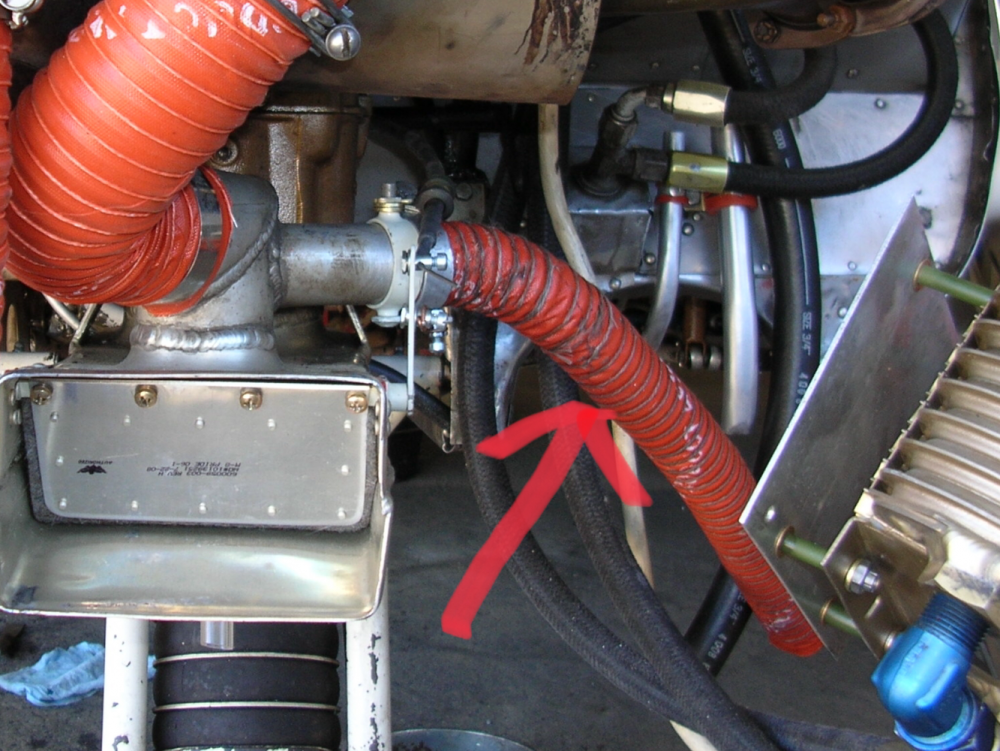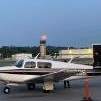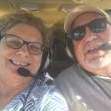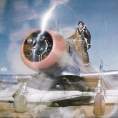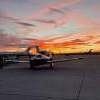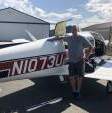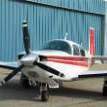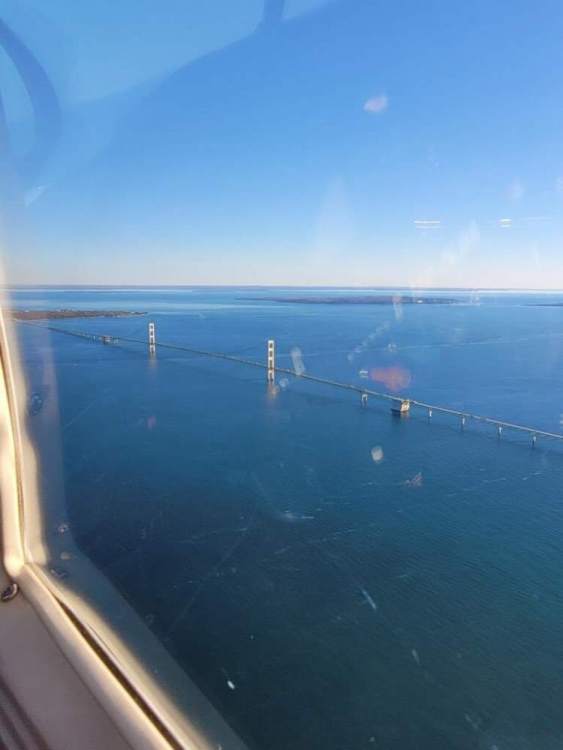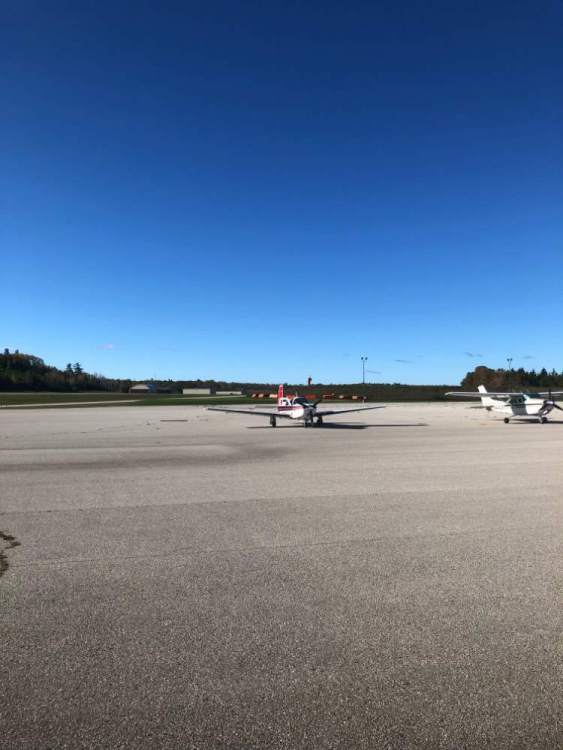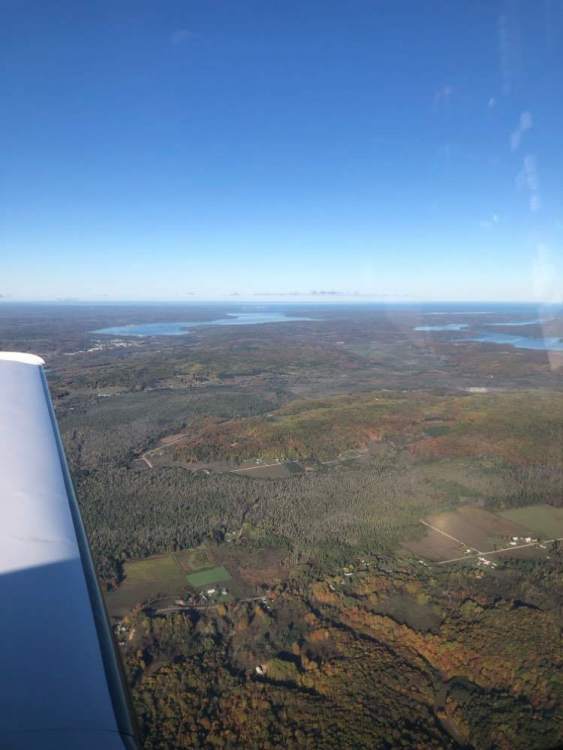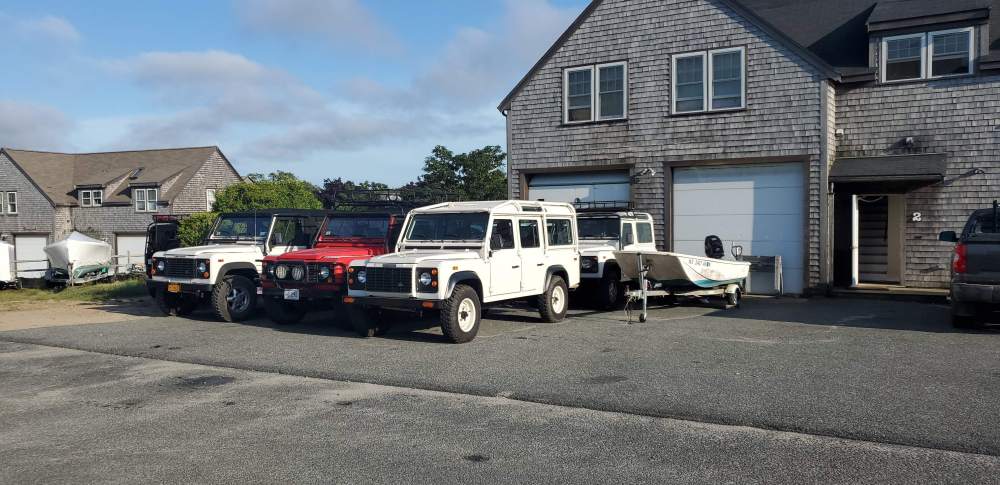Leaderboard
Popular Content
Showing content with the highest reputation on 10/28/2021 in all areas
-
I would say I am moving laterally for two specific reasons. When I bought my Mooney It was a perfect fit for what I needed and that is to bring 2 sometimes 3 people plus a lot of baggage 120 miles each way for the least amount of money. Well business continues to grow and I need to bring more people more parts. To address that problem I bought a Baron with three other people and it works great I use it during the week and they use it nights and weekends. Payload problem solved I planned to use the Baron mostly during the peak season (May-September) and the Mooney the rest of the time. Well I am 3 years in now and while it does slow down in the winter it doesn't slow down enough to only need 2 people. So to this day I continue to use the Baron most of the time. Then came the next and more challenging issue. I started noticing a ringing in my right ear and I didn't thing much of it in the beginning but like most things it continued to get worse. I couldn't figure out why, sometimes it was more noticeablethan others. I figured 41 was a bit young to get tinnitus but everyone is different. I went to see an ear doctor and found out I don't have tinnitus but likely earlier in life I damaged my right ear. Fixing cars my whole life that isn't hard to believe. I told him what I do for work today and that I fly everyday to get there. He said that flying is likely your problem that provokes it to ring today. I said I have plenty of friends (one that is twice my age) that fly frequently and don't have any issues. He asked, how many of them fly 10 times a week for the past 3 years? I said...... He told me, no one is surprised when there ears ring when they hear something very loud, well it is nothing more than pressure and you do that every time you fly. I stay below 5000 95% of the time and 2500 when it is VFR. there have been a few weeks when almost every day was VFR and when I never get above 2500 the ringing goes away. I currently love what I do and don't want to stop but I don't want to do anymore damage to my ear. I bought a pressurized Cessna P337 Skymaster. After speaking to people that own one It sounded like a perfect fit. With only a little over 300 pressurized skymasters made few people have flown one and even less have own one. I am going to miss the Mooney. It never failed me during the 650 or so hours I put on it. If there is anyone who want to go for a ride in one call me. I don't mean just the people looking to buy it but anyone who would like to see and fly one. A pet peeve of mine is when someone says "I heard from a friend that Mooneys are (fill in the blank)". I ended up liking and buying a Mooney because someone took me flying in their Mooney and I saw first hand that people that talk bad about a Mooney are wrong. I would love do for someone what he did for me.6 points
-
Enjoy your Baron, a sweet handling machine. Don’t forget to call in and continue to contribute. You are still a MSer.2 points
-
Completely off topic, but I've always kept the pilot window closed even in the hangar because of spiders There's like a never ending supply of them where we are...2 points
-
Had the most beautiful sunset coming back into the LA area Saturday which wouldn't have been possible without my recent IFR ticket. There was a very thin, maybe 500' thick layer at about 5,500-5,800' and the setting sun shining off of it. ATC took us down to 6,000' for a bit and we were just skimming the tops of the clouds until we were cleared to descend through.2 points
-
I took delivery of N5812T at the beginning of December and 62 hrs later it has turned out to be better than I thought. A little background, I got my private in 2006 did the usual primary in a 152 then started renting 172s and then wanted more and rented the hottest airplane available the mighty Piper Arrow! I hung around the airport like many new pilots and in the summer of 2007 I met a guy who owned a M20C it was in rough shape but I remember thinking how can a carbed 180hp fly faster than a 200hp arrow. I did the rental thing until 2011 when I bought my first airplane. It was a 1955 F35 Bonanza. Had that for 4 years and loved it. Then life changes made me have to sell it. Didn't fly again until 2017 when I bought a 1961 baby baron. That I just sold 2 weeks ago. Had an awesome experience with that one also. Why did I buy the Mooney? In 2017 I started a business in Nantucket so I needed something to commute from MHT to ACK Monday-Friday. My friend has a 1967 M20F he let me put a little more than 200 hours on it in 2018 and that is what made me fall in love with Mooneys. Last year I used the Baron almost exclusively and found it was WAY more airplane than I needed. It had a useful load over 1600 pounds and most of the time I would be carrying 2-3 people 120 miles to Nantucket. A huge waste of capacity. The whole time I owned it I used it to it capacity maybe 6-7 times. I have been a lurker here about 2013 but naturally have be on he alot (8-10 hours or I start having withdrawals) now that I own a Mooney. I love it here!1 point
-
I too had a dark G5 once shortly after being installed. To add to @Skates97feedback the sequence was: master off, hold G5 power button, master on, release G5 power. I know it's a nuance but was the only sequence that worked.1 point
-
There is a new underwriting company surfacing, but it's unknown at the present time if they'll be participating in personal GA aircraft insurance. Another carrier is expanding its operations to cover more lines of aviation business, but unknown if that will include personal GA aircraft. At this point, my feeling is that the hard market has more or less run its course, and any price increases at this point for personal GA aircraft would be more reflective of claim inflation than market capacity. Capacity is, for now, poised to increase. I'm quite concerned about the claim costs. I've never seen such a steep jump in repair estimates.1 point
-
I've used air fleet I think 3 times and Steele aviation once. I've been happy with air fleet and would use again. Where ibran into issues is borrowing less than air fleets minimum, I wish I had a good answer for you on that one.1 point
-
Load tests measure cold cranking amps - what is measured by a typical cheap automotive battery tester - basically current delivered in a short burst upon initial demand, not current delivered over a period of time (capacity). The CCA spec for our batteries are lower than for an automotive battery however. But if CCA is even mildly below spec for that particular battery, then it is in really bad shape and would dismally fail capacity testing. On researching further, a proper battery capacity tester seems to cost at least 2.5 amu, and I have as yet to work with a shop that had invested in one. Then there are makeshift versions out there of dubious accuracy, and I am not especially handy at putting such things together. For the cost of a real capacity tester, I could buy about 8 Concorde batteries for my bird. I think maybe keeping mine on a battery minder at all times and automatically replacing every 5 years or so may be a good compromise position.1 point
-
Just to provide some clarity to the OP's original request, here's my understanding of the Ovation evolution. This is done from memory and general knowledge, so there may be some inconsistencies which I encourage others to point out. 1994 - Original production. IO-550 rated at 280 HP via a reduction in max RPM to 2500. Three bladed McCauley prop, standard steam gauges, King avionics various other options available. 1999 - Eagle variant introduced, reduced HP to 244 with RPM restriction, lighter weight cabin materials to compensate, fewer options to keep weight down. 2000 - Ovation 2 introduced, switch to Garmin 430 avionics, two bladed McCauley prop, other options available. 2003 - DX introduced, Garmin 530/430 and rearranged panel to use Moritz gauges, 3-bladed Hartzell prop, etc. 2005 - GX introduced, G1000 avionics, option to increase HP to Ovation 3 310 HP by increasing max continuous RPM to 2700, first by STC and later by Mooney factory. 2018-19 - Ultra introduced, two door cabin, G1000 NXi, composite cabin, etc. Hope that helps.1 point
-
You must not have installed an LED landing light yet. Turning on the GE bulb used to make my ammeter needle wiggle; I put in a Whelen Parmetheus in April 2014, and it's only been turned off twice since then--halfway through a pitot static check, and during one annual. The load it puts on the system is negligible.1 point
-
Although I tend to agree with the above regarding icing, you may want to rule out there being an obstruction at the aileron center links- if you have a manual gear, what is the state of your Johnson bar boot? A pen or flashlight or tool that falls through a hole in the boot can cause aileron issues… there’s a very interesting NTSB report where a pilot had his ailerons locked in a bank, and also had some trouble getting his gear down because of this. [Edit] never mind- I just re-read and saw you have elec gear….next time I’ll wait for the morning coffee to kick in!1 point
-
@Furzol….this ^ ^ ^ ^ Note the column under each power setting for “2550” in the RPM row. Use this RPM religiously for climb after takeoff, all through cruise, and during descent. It was developed and recommended by the STC’s originator, Bob Minnis, during extensive flight testing to be the most optimal power setting for the 310HP upgrade. More on that if you want…PM me for details. Steve1 point
-
Ive developed a relationship With my hangar spiders. They stay out of my work gloves, and I won’t kill them and all their babies. It has worked out well, so far.1 point
-
1 point
-
It’s always best to be as knowledgeable as possible when dealing with those that maintain your plane(great reason to utilize Mooney space for all the knowledge and experience here).I learn more every day. Here is a video on capacity testing from Concorde. Sent from my iPhone using Tapatalk1 point
-
I just had a Concorde RG-35Xc "fail" a load test today during the annual inspection. First I don't know what the load specs are, so hard to know what "fail" means until I talk to someone tomorrow. The battery was installed in December 2017 and has been hangared and on a battery minder ever since. However, the airplane has been sitting in an avionics shop hangar for ten weeks not on a charger, so that probably didn't help any. This is not my usual shop for annuals, either, so I was a little annoyed with the battery thing, which is why I came to Mooneyspace tonight. But I'm not going to argue this one. I'll just roll with a new battery and see what I get. I will say I thought I was getting a little less crank, but I never came close to not starting.1 point
-
Car batteries are more robust and 6 -7 years is a good run for them. I recently had my 6 year old Subaru battery tested with whatever quick tester the auto shop uses and they said it was 90% new (whatever that means). It still started fine. Then, I left the door ajar and the interior lights ran it flatter than a pancake in less than an hour. Lessons learned: 1. It may crank, but an old battery may not run your avionics very long. 2 . There is no substitute for a real capacity test that takes an hour or more and then requires recharging. Several hour process all together. 3. Just replacing the battery every 5 years might be a good option if you depend on it IFR. Skip1 point
-
I bought a J after 30 years off, I’m 66, and only having a couple hundred hours then. I flew a 172 for 8 hours and got comfortable flying, but my landing weren’t anything to write home about. I moved to the Mooney an found that once I got my checklists dialed-in it wasn’t long before managing a complex plane wasn’t hard. I also found it easier to land than the Cessna because it is more stable in decent and has more solid feeling controls. On landings I f I came in too fast (even 5 knots) I would float along often ballooning or maybe catching a gust and then having to deal with that, sometimes more successfully than others. A stable decent at the correct speed sets up a pretty easy landing. Perhaps not a perfect one at first; but one you won’t be ashamed of. You have a lot more recent experience than I; use your checklists, hit your speed on final, check the gear 3 times and you’ll be fine. jb1 point
-
1 point
-
I’ve noticed that most people claiming fantastic battery life only replace them when they won't crank the starter. They likely would have failed a capacity test years before. Cold cranking amps are different than capacity. Skip1 point
-
1 point
-
if the side window is open you can easily reach it through it, that’s how I get my headset out to fly the 1401 point
-
This is a great writeup by Don Maxwell from back in the day. CARB HEAT CARE.pdf1 point
-
I am no expert, unlike a lot of the folks that have given answers here. But I was a lowish hour VFR only pilot that transitioned from a Cherokee, and I'm only a little older than you are :-) The hardest part for be was two fold, both of them in the landing phase. Proper speed control on the pattern and learning the sight picture on the flare. I'm still getting better but not mastered after about 50 hours in my J. I have gotten much better at speed control and a little better on the flare and touch-down. I have also started to not trim all the way down but to trim to short final and once I've gotten the runway made and power to idle I use both hands to slow the decent in the flare and keep it just off the ground. This seems to be working better for me than trying to land with one hand. The Mooney is a breeze to fly and to get where you are going. One of the worst things about the Mooney is how hard to build time in it. Where your Cardinal or 172 will take you 3 hours to get there, the Mooney cuts that time considerably. Have fun, learn well and you will love it.1 point
-
If rigged properly, the Mooney is a pretty docile airplane compared to the C150. If the pitch/power relationship was taught properly, transitioning to a Mooney would not be difficult. Unfortunately, from my experience with transitioning students, most instructors don't teach primary students this concept properly. The result is speed control is an issue with many people transitioning to the Mooney. Once the easy method of speed control is mastered, flying the Mooney is no different than flying the more draggy airplanes. Landings are an issue for most transitioning pilots, too, because of the simplistic landing gear structure. To save weight and complexity Mooney went with shock disks. This means that the transitioning pilot needs to really be able to control the rate of descent on touchdown. This goes back to really understanding the pitch/power relationship and slope management, which, from my experience, is also not taught well by many primary instructors. Without oleo struts to absorb the shock of a landing with too much vertical speed, the combination of too much forward speed and vertical descent rate will lead to a bounce from which many new students are not properly prepared to recover. So the transitioning student must necessarily be trained to understand the pitch/power relationship so well that they can control their speed within a knot or two in combination with slope to maintain the descent rate necessary to touch down lightly on the mains. The perfect landing occurs when the energy available for flying is dissipated at such a rate that it is just above zero as the mains touch down. A good Mooney specific instructor will be able to provide this guidance to make for a fairly easy transition for most. The attached document contains the secret to making good landings. Precision Flying With Don Kaye 8-11 .pdf1 point
-
1 point
-
As a point of clarity Yetti was in use prior to the overpriced cooler scene became popular. It started with a bike ride where someone was drafting me and they said it was like drafting behind a "sasquatch" and I said no I was from the northern Yetti tribe. There was a YettiCross cyclocross race series. With a couple hundred dollars of faux fur you can have your own yetti costume too.1 point
-
Might want to check and see if there’s a loose wire back there. Also, I think theres a kit to rebuild them. Just options for you.1 point
-
Being wary shows your intelligent. No one can learn much about anyone on the internet. Listen to your instructors they know you, your abilities etc as opposed to us internet folk. There is no harm at all in being methodical and taking all the steps, shure some get away with skipping a few steps, and some land gear up too, or stall in the pattern and smite the Earth. Not that my opinion is worth anymore than anyone else’s, but my opinion is that every different airframe you get to fly and get checked out in, you learn something and it’s often knowledge that’s usable in the next airframe. it’s experience, gain as much experience as you can as you climb the ladder1 point
-
The engine in your airplane is part of the Type Certificate. Are you absolutely wedded for life to that engine? A lot of Rocket owners would say no. The same thing will happen here. If Garmin does not support the G1000 in the future, indeed very quickly STCs will develop. This is hand wringing over an easily solvable problem.1 point
-
Read this one below. Happy to hear there’s a Rocket gnome by the way. When I was a WFFFFR, we had a Rocket Attack Midget. Sounds similar.1 point
-
1 point
-
Does hibernation in the UK really occur in the summer? Do you have a VOM? If so, is there voltage at the CBs? Then measure voltage at each fuse. You can also measure resistance across each fuse to determine if they're blown.1 point
-
1010 for now. It’s going to go up a decent amount, I have a couple things that are boat anchors coming out over the winter. Big standby vac pump by the battery, all the tubing, engine vac system, stormscope, and all the stuff for the century 2000.1 point
-
1 point
-
Ron, given you already have approval for the 310HP STC on your airplane, CMI (via Service Bulletin M75-6R1 - attached below) allows install of "N" cylinders on the "G" engine (within the same "engine family"), so long as all other related components are replaced as well. Some of the differences are (your shop should be able to speak to these. If not, I can provide more context)... Intake & fuel system differences. For example, the "N" engine has a venturi insert on the valve side, whereas the "G" is straight. The "N" generates about 1.5 to 2% more power over the "G". You'll need three pieces of aluminum sheet metal (two on the front of the engine, one on the rear) fabricated into small "wedges" to plug the gaps between the baffles and the cylinder fins. Mooney has these listed as parts, but they are very easily-made if your OH folks are good with sheet metal. Bob Minnis - with whom I worked in 2014 for my "N" engine replacement - sent me my three pieces, but has no more on hand. He sent me the drawings, so I'll dig these out and forward them to you a bit later. It will save you from having to call Mooney. Your engine placard will be modified to indicate "-C -N" to show the conversion. STC# SA03024CH does allow for you to install the -F7498 (the Acclaim Type-S) model prop to your Ovation. Steve M75-6R1.pdf1 point
-
The prepayment penalty holds only for the first year or two of the loan (at least on both loans I have had with them). After that period, you can prepay in any amount at any time.1 point
-
For financing, I have had a very good experience with Dave Savoie with US Aircraft Finance co. I have financed two airplanes with them including my Mooney. https://www.usaircraftfinance.com/1 point
-
Hey Karen, welcome aboard... Personal finance has a lot of expertise to go with that... I used AOPA/Bank America when I had the same challenge, years ago... Mostly, I wanted the experience of AOPA behind me... after a couple of years of ownership we refinanced looking for the lowest rate... I had gone to my bank... they were so happy to discuss private airplane financing... for my new Lear or Gulfstream... they surprised themselves with how little they knew about GA airplanes... For insurance... many MSers use @Parker_Woodruffand company... Start organizing your Transition Training while you are in the planning phase... Good luck with your next steps... Best regards, -a-1 point
-
1 point
-
1 point
-
I love the spring there! 200 indefinite ceiling 1800 RVR is the norm! I think Mooneys are the best certified aircraft for 2-3 sometimes 4 people on short flights like mine. Those things are my plan B. In addition I go to Suvurval System in Groton CT. They have a dunk tank and teach about ditching and surviving in the water. I highly suggest them if you fly over water. Thanks great to be here. I have a auto repair shop, I Specialize in Land Rovers1 point

